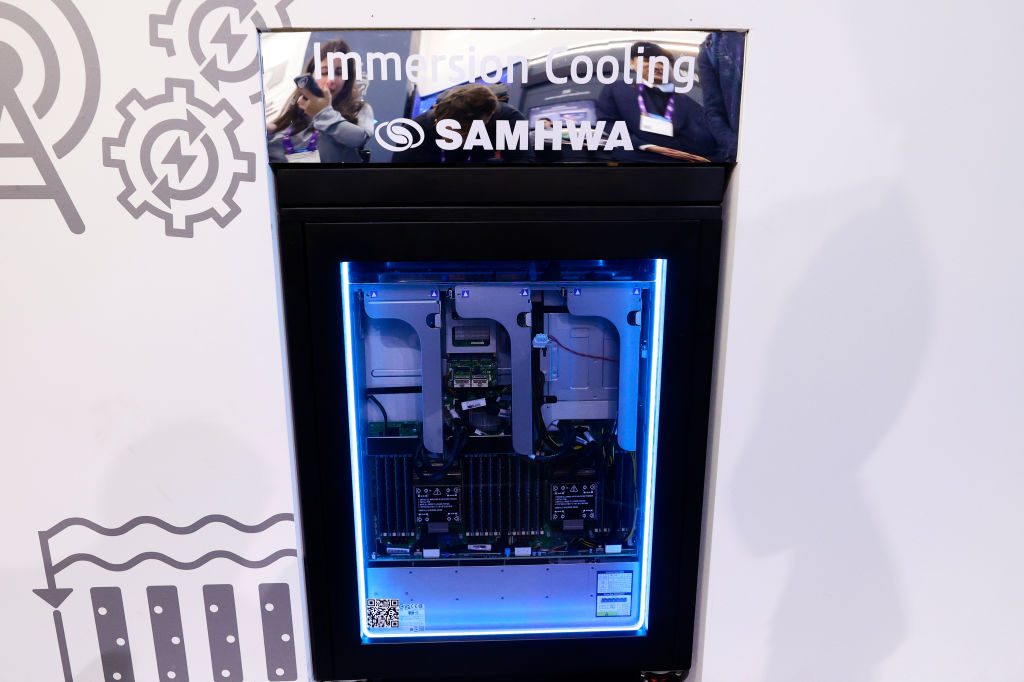Earlier this month, Google (GOOGL) revealed that the company’s greenhouse gas emissions have climbed nearly 50percent percent since 2019 thanks, in part, to A.I. The search giant’s annual environmental report is the latest addition to a growing body of research that shows how energy and resource-intensive it is to power A.I. workloads in data centers, which could hinder companies from reaching their net-zero emission goals.
While some tech giants are turning to renewable energy—including potentially nuclear—to meet A.I.’s energy demand, other companies claim they have devised new, more affordable technologies to reduce the carbon footprints of data centers. They come as Microsoft, Amazon, and other Big Tech companies spend billions building data centers across the U.S.—an initiative that could double the country’s electricity consumption by 2030, according to the Electric Power Institute.
“As of now, there is so much more conversation around data center energy consumption than ever before,” Abhijit Sunil, a senior analyst at Forrester who researches green IT and data centers, told Observer.
One possible solution companies are exploring is immersion cooling. Traditionally, data centers are cooled using air conditioners and fans, which require tons of energy. An immersion cooling system, however, submerges data center equipment into a special liquid that absorbs the heat. That could reduce as much as 90 percent of the energy needed for cooling, which makes up to 40 percent of a data center’s total energy consumption, according to Peter Boulin, the CEO of Green Revolution Cooling, an immersion cooling provider.
As data centers implement chips like Nvidia (NVDA)’s GPUs—which require massive amounts of electricity —to power large A.I. workloads, immersion cooling could be a way to make A.I. usage less energy-intensive.
The “exponential increase” in power at the chip level is “fundamentally changing the way data centers are being designed and constructed,” Joe Capes, the CEO of LiquidStack, another company that creates immersion cooling systems, told Observer. “A majority of existing data centers are not well equipped to support these workloads.”
In addition to new cooling systems, some startups are making software that enterprises can use to optimize their current workloads to be less energy-intensive. Incredibuild, an Israeli company, claims its platform can tap into “idle computing,” or power not being used by a program, and convert it into a usable source of energy for other tasks in the software development process.
As a result, data centers can extract more electricity from their existing power source to support those workloads instead of using an additional source, which could reduce overall emissions, Dori Exterman, Incredibuild’s chief technology evangelist, told Observer.
Exterman explains that this technology, which he said is used by Amazon Web Services and Intel, helps reduce carbon emissions now that companies are beginning to adopt A.I. assistants like Microsoft Copilot that software engineers and employees on other teams can use to boost their productivity.
“The future of dealing with all this demand A.I. generates is with more efficient software,” Exterman said.
Making data centers greener comes with challenges
Despite their potential to reduce A.I.-driven emissions, these technologies are still relatively new products that have yet to be fully explored by existing data centers.
In terms of immersion cooling, a “lack of standards” and “best practices” around deploying the technology across data centers may hold companies back from implementation, Forrester analyst Sunil explained. “It’s an emerging technology, and everything evolving with it, including standards and technical know-how, is a big part of where we are seeing challenges now.”
Another challenge is the cost of adopting a new technology. While some immersion cooling companies say the technology is more cost-effective than traditional cooling measures, one says that major data warehouse providers may be skeptical about whether it’s worth the effort to retrofit their existing infrastructure solely to address the energy problem.
“It has to make economic sense for them,” Boulin, CEO of Revolution Green Cooling, told Observer. “If you’re a Dell or an HP, given the scale of your companies, you need to see a massive market before you allocate engineering resources to designing a platform specifically for immersion.”
Incredibuild’s Exterman said getting data centers to adopt such new technology is a “matter of education” about what the product can deliver. But as A.I. giants like OpenAI seek more computing power to improve their tools, the chief technology evangelist believes that energy optimization software and other carbon-reduction tools must be deployed at a massive scale to meet the growing energy demand —all while reducing emissions. “The industry is trying to catch up,” Sunil said.

